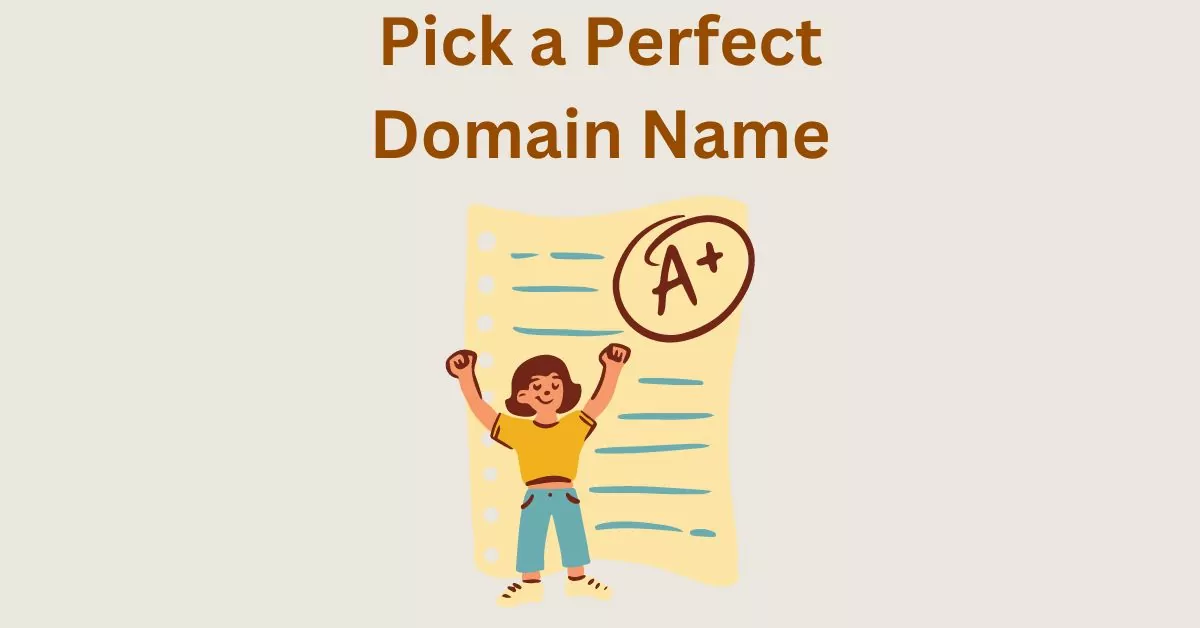How to Choose the Best Domain Name – Expert, Practical and Smart Tips
Estimated reading time: 5 minutes
Last updated on March 22nd, 2024 at 05:33 am
Do you want to know “How to Pick a Domain Name”?
Imagine your website is like a house, and the domain name is its address.
Picking the right domain name is crucial because it’s the first thing people see and remember.
Did you know that 46.1% of websites have “.com” as their domain extension?
That’s because “.com” is like the main street everyone knows.
So, when choosing your domain name, make it simple, easy to spell, and related to what your website is about.
A good domain name can make your website more memorable and inviting.
10+ Tips to Pick a Perfect Domain Name
1. Clarity is Key
Think of your domain name like a signpost.
If it’s confusing, people might get lost.
Did you know that 55% of visitors spend less than 15 seconds on a website?
So, make sure your domain is clear and gives a hint about what your site is about.
2. Reflect Your Brand
Imagine your domain name as your online identity badge.
It should represent who you are.
Brands with a strong, consistent identity are 20% more successful.
So, choose a domain that reflects your brand personality.
3. Keep it Short and Sweet
Ever tried remembering a really long password? It’s tough!
Similarly, shorter domain names are easier to remember.
Studies show that the most popular websites have an average of 6 characters in their domain names.
So, keep it short and sweet to leave a lasting impression.
4. Avoid Hyphens and Numbers
Hyphens and numbers in a domain name are like potholes on a smooth road.
They can make things bumpy and harder to navigate.
Did you know that 74% of websites with hyphens in their domain names rank lower in search results?
So, skip the bumps and keep your domain smooth and easy to type.
5. Choose the Right Extension
Think of domain extensions like the endings of a story.
The right one can make a big difference.
Studies show that 46% of all websites use the “.com” extension.
It’s like the classic ending to a successful story.
So, choose an extension that suits your website’s purpose and makes it memorable.
6. Consider Keywords
Keywords are like the secret sauce in your domain name.
They tell search engines what your website is all about.
Websites with keywords in their domain names tend to rank higher.
In fact, they are 33% more likely to be clicked on in search results.
So, consider adding relevant keywords to your domain name to give it an extra boost.
7. Think Long-Term
Choosing a domain name is like planting a tree.
You want it to grow and thrive for years.
Did you know that changing a domain name later can be a bit like uprooting that tree?
It’s a big task.
So, think long-term and pick a name that will stay relevant to your website’s goals over time.
8. Research Competitors
Picture your domain as a unique storefront in a busy street.
You wouldn’t want a name too similar to your neighbour’s, right?
Similarly, check out what domain names your competitors are using.
It’s not about copying but standing out.
Unique names get 50% more attention, so do your homework before settling on one.
9. Check Availability and Trademarks
Imagine finding the perfect name, only to realize someone else already took it.
Checking availability is crucial.
Moreover, it’s like making sure your store name isn’t already trademarked.
This avoids legal troubles down the road.
About 5 million domain names are registered every month, so it’s essential to secure your spot before someone else does.
10. Social Media Compatibility
Think of your domain name as a social media username.
You’d want them to match, right?
Consistent branding across social media helps people find and remember you.
About 71% of consumers who have a good social media experience with a brand are likely to recommend it.
So, ensure your domain name is available as a username on major social platforms to keep your online presence cohesive.
11. Get Feedback
Choosing a domain name is like picking a paint colour for your room.
Sometimes, a second opinion is valuable.
Share your potential domain names with friends, family, or even your target audience.
Did you know that 77% of consumers trust online reviews as much as personal recommendations?
Getting feedback can help you choose a name that resonates with others.
12. Final Checks and Registration
Before you hit the register button, it’s like double-checking your homework.
Ensure there are no typos, it’s easy to spell, and it aligns with your brand.
Did you know that 67% of consumers consider clear, detailed images to be very important when making online purchase decisions?
Similarly, a clear and error-free domain name makes a positive impression.
Once you’ve done your final checks, go ahead, register your domain, and claim your spot in the vast online landscape.
Wrapping Up – How to Pick a Domain Name
Picking the right domain name is super important when you’re creating a website.
Your domain name is like your online address, and it affects how easily people can find and remember your site.
In this guide, we’ve talked about things like making sure your domain name relates to what your website is about, keeping it simple so people can remember it, and being aware of trends.
It’s all about choosing a name that not only represents your website but also makes it easy for visitors to find you.
